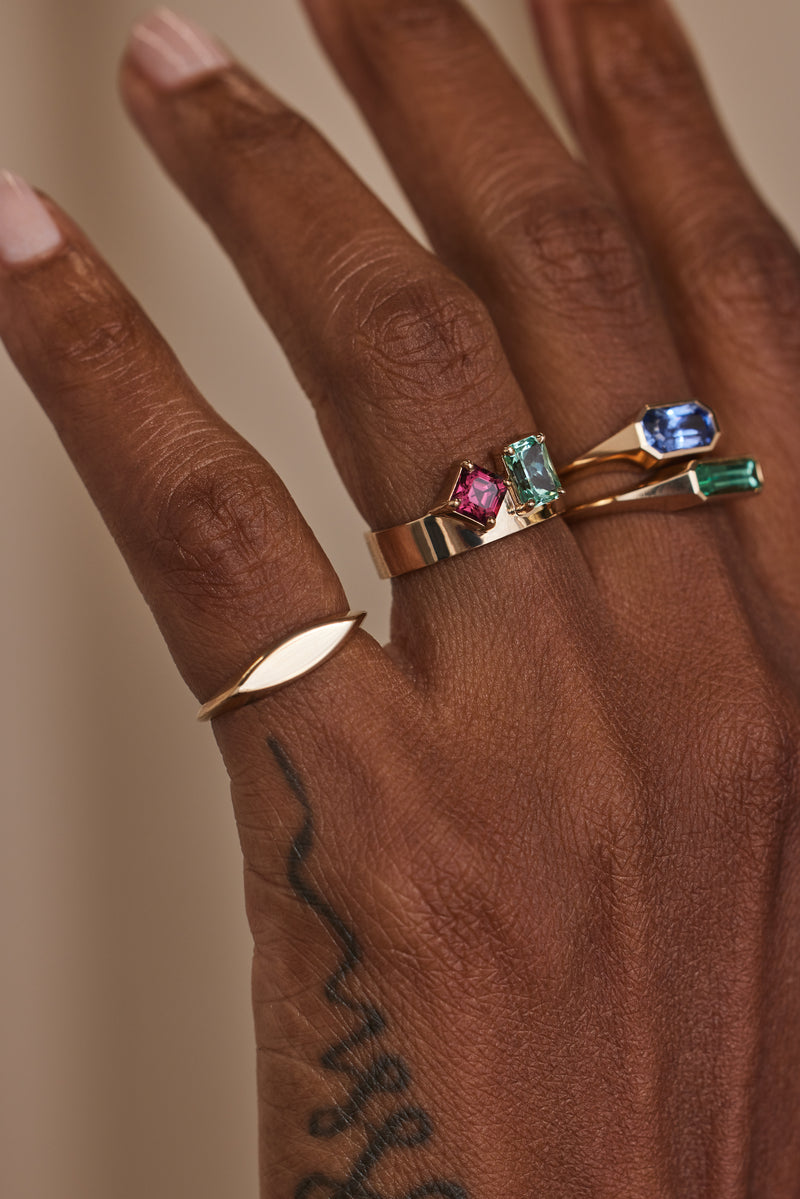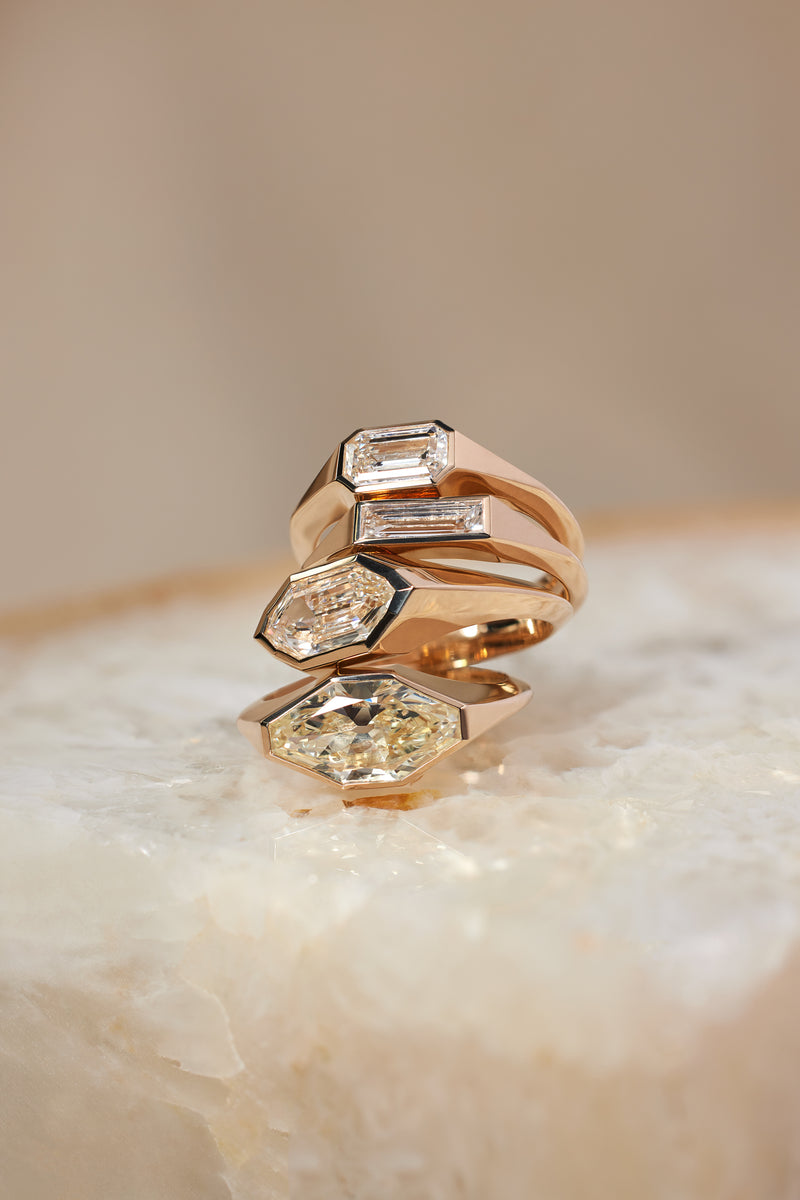A Brief History of Signet Rings
- Posted on 04.07.23
- SIGNETS
The human desire to personalize and adorn ourselves with jewelry is nothing new. The signet ring has a long and rich history dating back to at least 3500 BCE. Historical records show that the people of Mesopotamia created engraved seals to mark authenticity, Egyptian pharaohs engraved scarabs for rings, and Romans personalized iron and gold with symbols.

For many cultures, authenticity has been the driving force behind engraving signet rings. Signet rings have been used to stamp, seal or sign documents in many cultures and the figures who owned these rings tended to be in positions of power.
While these rings have been dominantly worn by men, during the Byzantine Empire women began to wear signet rings that donned their family crests. This was in part due to the fact that women were slowly being recognized as the caretakers of their households and families' possessions.

In the Middle Ages, Nobility continued to engrave family crests, emblems, and personal markings onto their signet rings to emulate their power, pride, and personalization. Those who did not have noble status or family crests, would still wear signet rings. Instead of a coat of arms, their rings would have their trades and initials engraved on them. For example, a tailor might wear a signet with scissors and their family name engraved on the bezel.

By the 19th century, these rings became ornate for higher class wearers; They added jewels and carved into hard stones. The signet ring was considered an important part of the “gentlemen” dress code. According to the Western gentlemen’s world, signet rings were intended to be worn on the smallest finger of your non-dominant hand. This tradition stemmed from the Grecians, who wore their signet rings on their non-dominant hand or guard hand to limit their “enemy” or others from viewing their personal engraving and therefore would keep the signet ring’s meaning private to only the wearer.

While the signet ring was still a marker of cultural status, their functionality as a stamp, seal or signature waned in the 19th century as writing became more common. Engraved signatures were no longer needed; this loosened the rules of what finger it was worn on, but more importantly, it allowed for engravings to be more sentimental and creative. By the 20th century, the production and consumption of jewelry became more democratic and signet rings were adopted by individuals and various organizations alike.
As signet rings have evolved, their meanings have become more tender and personal, yet their history holds universal sentimental value. We all yearn for meaning –– these rings serve as small reminders throughout the day of those important beliefs, moments, or people in our lives. The words we chose to carry with us are comforting and we do not want them to be lost in translation; there are some words that simply more powerful in your mother tongue.

Today, we can honor tradition while creating our own guidelines. Any person can choose to wear a signet ring regardless of their status or personhood. Early Greek army commanders wore signet rings after a victorious battle, we can wear them after a victorious milestone too. Engraved signet rings can commemorate an important friend, lover, time, or philosophy, written in your mother tongue. Jewelry is always personal and nostalgic. Signet rings allow us to define what we want to be nostalgic for, what we want to hold close to us.

